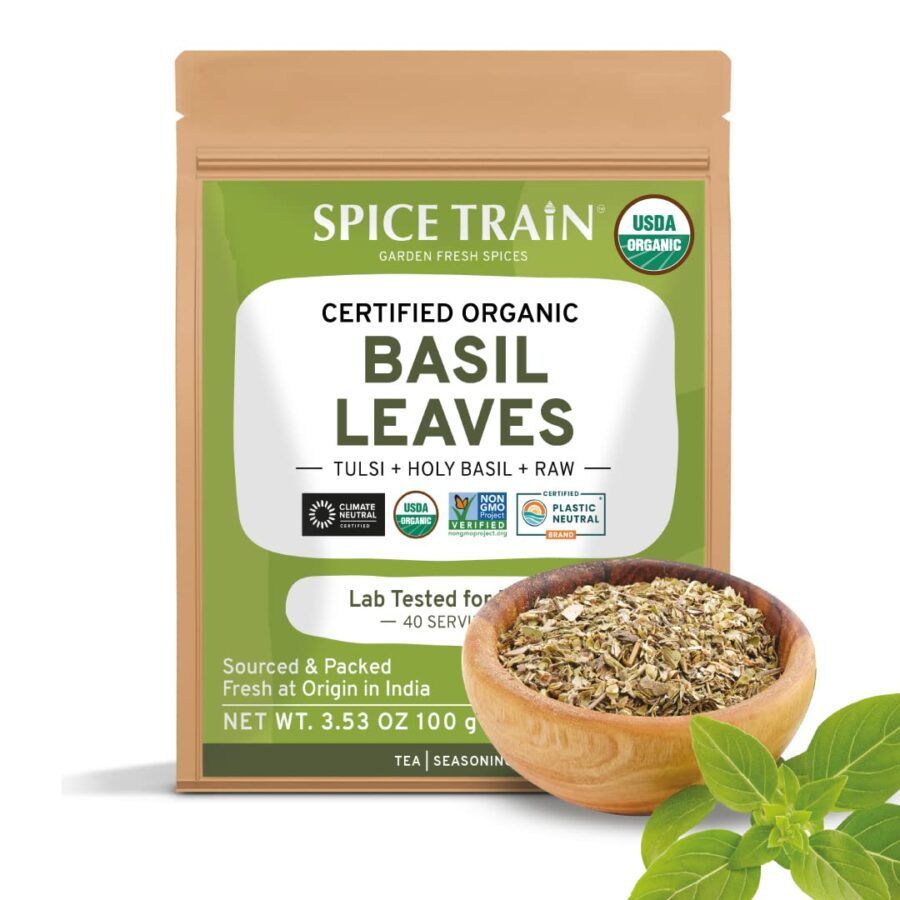Whether grown from seeds or purchased as a young plant, Basil is best harvested when it has reached its full flavor potential. Time it so that at least four leaves have opened on the plant. Basil has to be around 6 to 8 inches tall before you can harvest the leaves. If you know when you planted Basil, you may pick it up 60 to 70 days later.
Basil is at its peak flavor and aroma when picked first thing in the morning before the dew has had a chance to dry on the plants. Don’t rush to harvest your Basil once the summer months have passed since the cold might kill the plant. You can bring it indoors to keep your Basil alive over the winter.
Methods of Collecting Basil Leaves
Despite its short life span, Basil produces a bounty of edible leaves. When you need a few basil leaves, pin them off close to where the leaf meets the stem. Basil should be picked from the top of the plant, where new growth will emerge. If you initially prune the lowest leaves off, the plant may seem spindly and unhealthy. The best-tasting leaves are those that are picked just before the flowers appear.
Tips for Collecting Basil Stems
If you trim basil plants from the top down with a little pair of scissors, you can harvest full stems rather than just a few leaves at a time. You want to cut the node about 14 inches up the stems. This is the point where new leaves and branches will emerge. After cutting off no more than a third of the plant’s total height in two to three weeks, you may pick extra newly developed basil leaves. If you want your basil plant to remain producing leaves all summer long, pinch off the flower buds before they blossom.
Tips for Maintaining the Quality of Fresh Basil
To keep the fresh Basil longer, trim the sprigs and place them in water at room temperature for up to five days. This method is similar to the one used to preserve fresh-cut flowers. Because it rapidly turns brown when exposed to cold, Basil shouldn’t be kept in the refrigerator because it might spoil. Basil leaves may also be dried and stored for later use. You can use them anytime you choose. Basil may be preserved in the freezer for later use in various dishes, including casseroles, breakfast skillets, and soups.
Addition of New Basil Leaves to the Mix
If you want to appreciate the full flavor of Basil, whether it’s used fresh or cooked, you have no choice but to grow your Basil outside your door and tend to it yourself. After you’ve harvested some basil, you can use it to top your go-to pasta dish or sprinkle it on top of a pizza. Basil is a versatile herb. A refreshing drink made with basil leaves and lemonade is a delicious treat.
When should I plant my Basil after the winter solstice, and how soon should I do so?
Planting basil in the ground outside should occur in the early spring, around two weeks after the last frost has passed. Basil seeds may be started within six weeks before the last frost, but the plant shouldn’t be moved outdoors until the soil temperature has consistently reached at least 50 degrees Fahrenheit. Basil seeds can be started six weeks indoors before the last frost.
In the average case, how long does it take for a basil plant to mature?
Depending on how well it is cared for, there is a range of possible lifespans for a basil plant, from three to six months. If you move the plant indoors, it will have a longer lifetime (or somewhere where the risk of cold weather is reduced).
If I cut my basil plant off at its base, is it possible that it will regrow?
Basil leaves may be picked several times if it is done so in a safe manner, but, to prevent them from dying, they must be removed from the soil. If you want the plant to bounce back, prune it from the top down, but save approximately a third of the plant.


